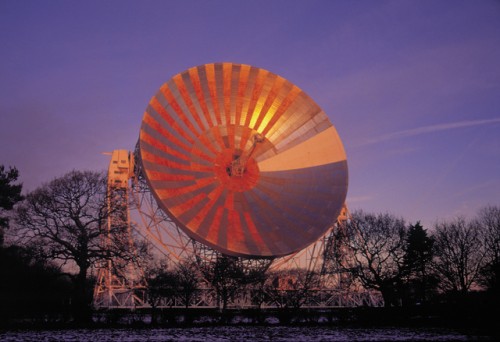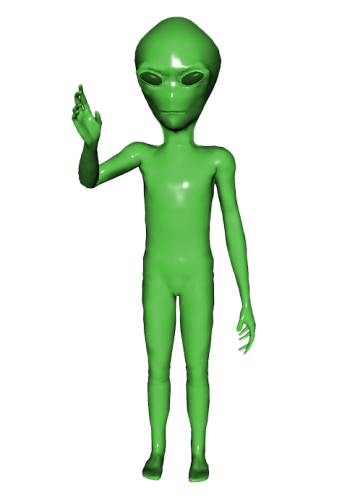Tag archives: SETI
Should governments provide funds for the search for extraterrestrial intelligence?

The Lovell Telescope was used during the SETI Institute’s Project Phoenix.
(Courtesy: Jodrell Bank Centre for Astrophysics, University of Manchester)
By James Dacey
Are we alone in the universe? It’s the age-old question that took on a whole new significance once we had built the tools to transmit and receive radio waves across interstellar distances. With the advent of radio telescopes, we had finally acquired the faculties to listen for the signs of an alien race trying to make contact. The search for extraterrestrial intelligence – better known as SETI – took a giant leap forwards in 1984, when the SETI Institute was founded in California. This institute is the nerve centre of SETI activities and it is funded almost entirely from private sources.
But while SETI activities have been strongly associated with the US, the movement has been international since its outset. Here in the UK, perhaps the most significant contribution has probably been the country’s involvement in Project Phoenix, which between 1998 and 2003 used the 76 m Lovell Telescope (pictured above) at Jodrell Bank Observatory near Manchester.
It seems that the desire among British scientists to search for aliens is still alive and well, as a bunch of academics has recently set up the UK SETI Research Network. The group held its first formal activity last Friday (5 July), during three SETI sessions at this year’s National Astronomy Meeting (NAM2013) at the University of St Andrews in Scotland.
View all posts by this author | View this author's profile
Of mice and ‘little green men’
By Tushna Commissariat

Just called to say hello?
(Wikimedia Commons/Crobard)
There’s nothing quite like mentioning extraterrestrials or aliens to get us “Earthlings” all excited or riled up! Late last week, a paper popped up on arXiv, by astronomer Alan Penny from the University of St Andrews. He outlines an incident where, for a short while, the possibility of alien contact was seriously considered. He was talking about what was ultimately the discovery of the first pulsar; but at the time the researchers couldn’t help but wonder if they had come across the first “artificial signal” from outer space.
The exciting happenings began in August 1967, when Jocelyn Bell Burnell (then a graduate student working with Antony Hewish – controversially, only Hewish won the Nobel prize for the pulsar discovery in 1974) at the University of Cambridge, noticed a particular source that had a “flickering pattern” that, over a few weeks, she realized showed up regularly each day at the same sidereal time. That December Bell pinpointed the specific position of the source in the sky using another telescope and the discovery was confirmed. In the coming months, three more similar patterns were found and the researchers agreed on “pulsating stars” or pulsars being the source. But during those winter months, the possibility that they had encountered the first alien signal loomed large. In fact, Brunell and colleagues dubbed the first pulsar LGM-1 or “Little Green Men”; although it was changed to CP 1919, and is now known as PSR B1919+21.
View all posts by this author | View this author's profile
Astronomers discover complex organic matter abound in the universe

NASA image of the star field in the constellation Ophiucus; at the centre is the recurrent Nova RS Ophiuci (Credit: John Chumack)
By Tushna Commissariat
Complex organic compounds – one of the main markers of carbon-based life forms – have always been thought to arise from living organisms. But new research by physicists in Hong Kong, published yesterday in the journal Nature, suggests that these compounds can be synthesized in space even when no life forms are present.
Sun Kwok and Yong Zhang at the University of Hong Kong claim that a particular organic compound that is found throughout the universe contains complex compounds that resemble coal and petroleum – which have long been thought to come only from carbonaceous living matter.
The researchers say that the organic substance contains a mixture of aromatic (ring-like) and aliphatic (chain-like) complex components. They have come to this conclusion after looking at strange infrared emissions detected in stars, interstellar space and galaxies that are commonly known as unidentified infrared emissions (UIEs). These UIE signatures are thought to arise from simple organic molecules made of carbon and hydrogen atoms – polycyclic aromatic hydrocarbon (PAH) molecules – being “pumped” by far-ultraviolet photons. But Kwok and Zhang both felt that hypothesis did not fill the bill accurately enough, when they considered the observational data.
As a solution, they have suggested an alternative – that the substances generating these infrared emissions have chemical structures that are much more complex. After analysing the spectra of star dust forming when stars explode, they found that stars are capable of making these complex organic compounds on extremely short timescales of weeks and that they then eject it into the general interstellar space – the region between stars.
Kwok had suggested, at an earlier date, that old stars could be “molecular factories” capable of producing organic compounds. “Our work has shown that stars have no problem making complex organic compounds under near-vacuum conditions,” says Kwok. “Theoretically, this is impossible, but observationally we can see it happening.”
Another interesting fact is that the organic star dust that Kwok and Zhang studied has a remarkable structural similarity to complex organic compounds found in meteorites. As meteorites are remnants of the early solar system, the findings raise the possibility that stars enriched our protoplanetary disc with organic compounds (by angela). The early Earth was known to have been bombarded by many comets and asteroids carrying organic star dust. Whether these organic compounds played any role in the development of life on Earth remains a mystery.
It will also be interesting to see if this finding has an impact on research groups that look for life in the universe, such as SETI , considering that complex organic molecules have always thought to be markers of carbon-based life forms.
View all posts by this author | View this author's profile